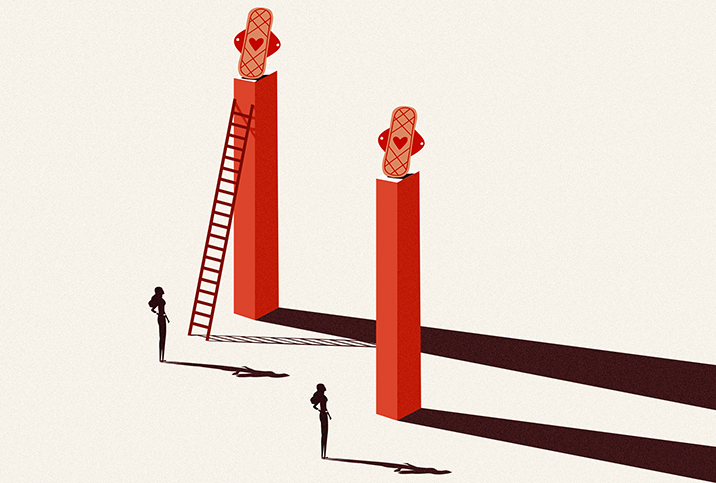Study: Taiwan, Latvia Outrank the U.S. in Terms of Women's Health

Women across the globe reported being poorer, unhappier and unhealthier than they've been in years, according to a global analysis of women's health.
American women, unfortunately, are no exception.
The Hologic Global Women's Health Index, released in the fall of 2022, highlights stark global disparities in women's health. Created in 2019, the worldwide study gauges women's health, physically and mentally, based on five categories: preventive care, emotional health, opinions of health and safety, basic needs and individual health.
More than 127,000 people from 122 countries and territories responded to the 15-question survey in 2021, according to Hologic. Questions included, "In the city or area where you live, are you satisfied or dissatisfied with the availability of quality healthcare?" and "Do you feel safe walking alone at night in the city or area where you live?"
On a scale of 1 to 100, with 100 reflecting the best score, 70 was the highest score achieved by a single country.
"A higher score on the overall index means more women are having positive experiences in the five dimensions," Hologic's report stated.
Not a single North American country—the United States, Mexico or Canada—ranked in the top 10, or even the top 20.
About the study
The purpose of the study is to heighten awareness and guide actions that increase the life expectancy and quality of life for women everywhere.
Hologic, a medical technology company focused on women's health, partnered with Gallup researchers to compile the study based on the five selected dimensions because those factors account for more than 80 percent of the variance in women's life expectancy at birth, according to Hologic.
The survey responses, the company says, represent 94 percent of the world's women ages 15 and older.
How did the U.S. measure up?
If America's Hologic index score was translated into an American public school score, the U.S. might have a D- in women's health, bordering on an F.
The United States scored a 61 on the index overall, but particularly stood out in the report for its glaringly mismatched healthcare spending.
"Countries and territories that spend more per capita on healthcare tend to earn higher scores on the overall Hologic Global Women's Health Index, except for the United States," the report stated. "[The United States] spends nearly twice as much as an average Organization for Economic Cooperation and Development country does on healthcare, but it has a lower life expectancy."
The top 10 countries for healthy women, according to the index, are:
- Taiwan (score of 70)
- Latvia (69)
- Austria (67)
- Denmark (67)
- Estonia (66)
- Switzerland (66)
- Germany (66)
- Czech Republic (65)
- Israel (65)
- Norway (65)
The five countries that scored the worst on the index were: Lebanon (40), Turkey (40), Venezuela (39), Republic of Congo (38) and Afghanistan (22).
Worldwide scope
In 2021, women across the globe said they were more stressed, worried, angry and sad than they were at any point in 2020, or within the past decade, according to the report.
The finding may not be surprising considering the COVID-19 pandemic was in its second year in 2021 when women responded to Hologic's survey. School closures and a lack of support for caregivers added an additional layer of uncertainty and stress for millions of women.
Fewer than 10 percent of women in nearly 50 countries and territories said they had been tested for cancer in the past year. Without preventive cancer screenings, women—and men—are more susceptible to dying from late-stage cancers.
"Annual visits to healthcare professionals correspond with two additional years in a woman's life expectancy," the report stated.
In addition, the study found women's ability to meet their basic needs—shelter and food—declined, while men's ability to do the same didn't change in comparison to 2020.


















